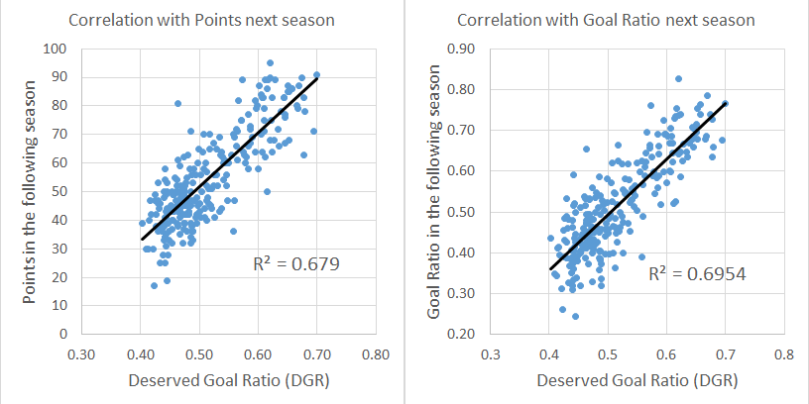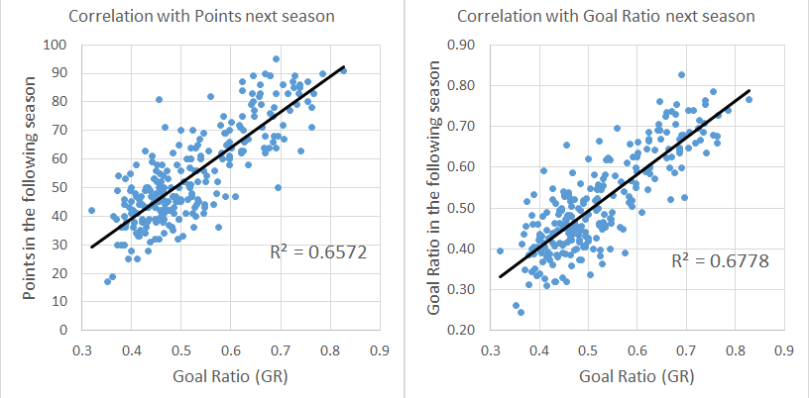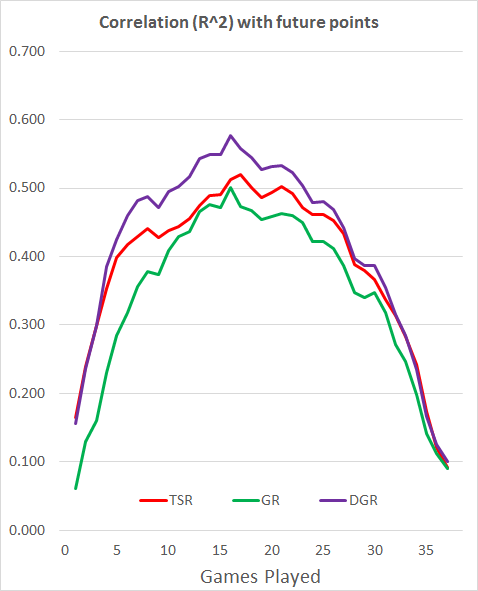In my last post, I introduced a metric called Deserved Goals Ratio (DGR) for predicting future performance. In this post I use it to predict the 2016/17 season.
For each game in our sample of the last 16 Premier League seasons, we calculate the Deserved Goals Ratio for each team, based on their 38 most recent matches. Taking the Away Team’s ratio away from the Home Team’s ratio gives us a “match rating”.
For example, when Leicester played Everton on 7th May 2016, the calculation was as follows:
Leicester: Deserved Goals For: 61, Deserved Goals Against: 47
DGR = 0.56
Everton: Deserved Goals For: 55, Deserved Goals Against: 55
DGR = 0.50
Match Rating = 0.56 – 0.50 = 0.06
If we repeat this calculation for every game over our sample, we can see how match ratings relate to results:
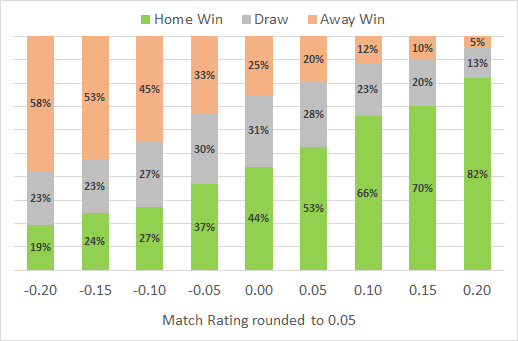
Using Excel’s SLOPE and INTERCEPT functions, we can produce formulas to work out the chances of a Home Win, a Draw or an Away Win for a given match rating.
Home Win % = Match Rating x 1.62 +0.46
Draw % = Match Rating x -0.17 + 0.26
Away Win % = Match Rating x -1.45 + 0.28
For the Leicester vs. Everton example used above, the match rating of 0.06 produces the following probabilities:

To predict the 2016/17 season, we calculate the DGR for each team, based on their performance in 2015/16. As 3 teams from last year were relegated, we do not have data for the 3 newly promoted teams, namely Burnley, Middlesbrough and Hull City. The average score for the league should be 0.5, so these 3 teams are all given the same score in order to arrive at this average.
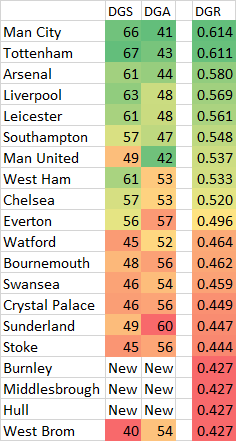
As above, we calculate the match rating and the probabilities for each game. Using a Monte Carlo simulation (which sounds complicated, but just means using random numbers to generate outcomes in proportion to the calculated probabilities for each match), we can see how many points we expect each team to score.
Running 5000 simulations produced the following result, the bars representing the central 90% of the simulations.
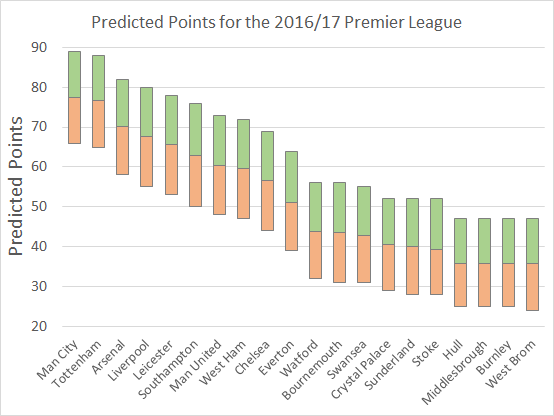
Using the results of the simulations, we can predict how likely it is that each team wins the league.
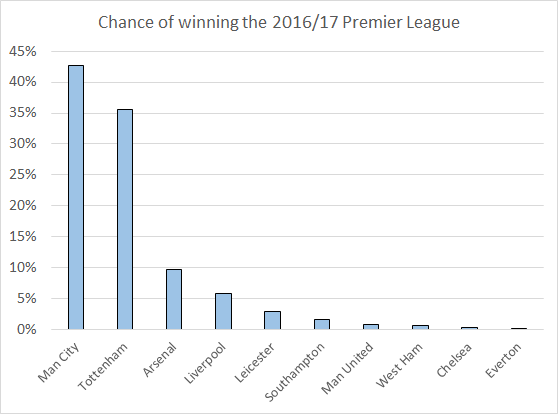
So Deserved Goals expects the title race to be a close fight between Man City and Tottenham, with Man City just having the edge.
